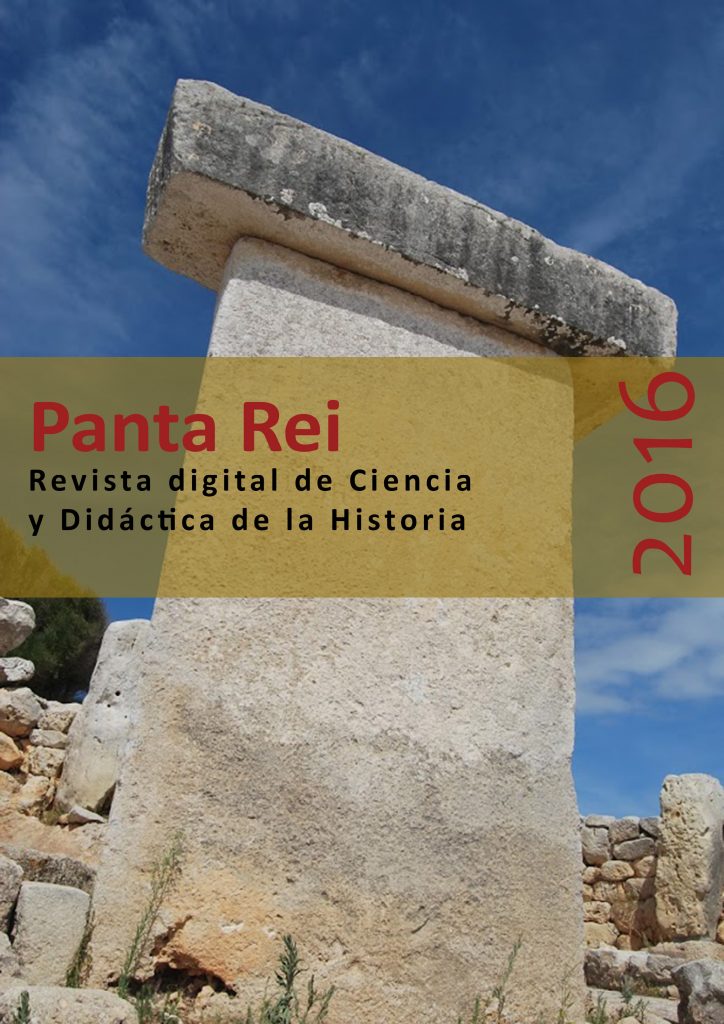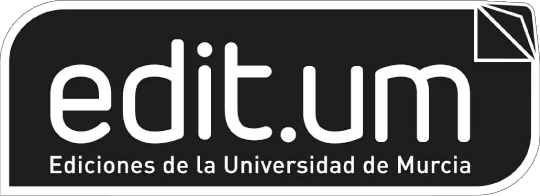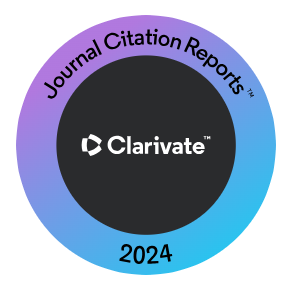Los orígenes de la tecnología a debate: una revisión de las primeras industrias líticas
Resumen
Durante muchos años, la comunidad científica ha considerado la producción de artefactos líticos como privativa del género Homo. Sin embargo, recientes hallazgos realizados en yacimientos africanos han aportado unos resultados que parecen poner en duda esta cuestión, retrasando la cronología de aparición de las primeras industrias líticas hasta más allá de los 2.6 Ma. planteados por el yacimiento de Gona. A partir de una revisión de estos yacimientos, el presente trabajo pretende realizar una reflexión sobre la posible autoría de estas primeras tecnologías, enmarcadas en un contexto paleoantropológico de creciente complejidad, y quizás atribuibles a miembros de otros géneros.
Descargas
-
Resumen532
-
PDF489
Citas
Asfaw, B., White, T., Lovejoy, O., Latimer, B., Simpson, S. y Suwa, G. (1999). Australopithecus garhi: a new species of early hominid from Ethiopia. Science, 284(5414), 629-635.
Benson-Amram, S., Dantzer, B., Stricker, G., Swanson, E. M. y Holekamp, K. E. (2016). Brain size predicts problem-solving ability in mammalian carnivores. Proceedings of the National Academy of Sciences, 11(9), 2532-2537.
Carlson, K. J., Stout, D., Jashashvili, T., De Ruiter, D. J., Tafforeau, P., Carlson, K. y Berger, L. R. (2011). The endocast of MH1, Australopithecus sediba. Science, 333(6048), 1402-1407.
Carvalho, S., Cunha, E., Sousa, C. y Matsuzawa, T. (2008). Chaînes opératoires and resource-exploitation strategies in chimpanzee (Pan troglodytes) nut cracking. Journal of Human Evolution, 55(1), 148-163.
Carvalho, S., Biro, D., McGrew, W. C. y Matsuzawa, T. (2009). Tool-composite reuse in wild chimpanzees (Pan troglodytes): archaeologically invisible steps in the technological evolution of early hominins?. Animal Cognition, 12(1), 103-114.
Castanedo, A. G. y Terreros de los, J. Y. S. (2009). Las herramientas de piedra más antiguas en África. Una visión general y algunas reflexiones. Sautuola: Revista del Instituto de Prehistoria y Arqueología. Sautuola, (15), 11-33.
Cela Conde, C.J. y Ayala, F.J. (2001). Senderos de la evolución humana. Madrid: Alianza Editorial.
Clark, G. (1977). World prehistory: in new perspective. Cambridge University Press.
Dart, R.A. (1957). The osteodontokeratic culture of Australopithecus prometheus (Vol. 10). Transvaal Museum.
Dart, R.A. y Wolberg, D.L. (1971) On the Osteodontokeratic Culture of the Australopithecinae. Current Anthropology 12(2), 233–236.
Delagnes, A. y Roche, H. (2005). Late Pliocene hominid knapping skills: the case of Lokalalei 2C, West Turkana, Kenya. Journal of Human Evolution, 48(5), 435-472.
Díez Martin, F. (2003). La aplicación de los “modos tecnológicos” en el análisis de las industrias paleolíticas. Reflexiones desde la perspectiva europea. SPAL, 12, 35-51.
Domínguez-Rodrigo, M., Pickering, T. R. y Bunn, H. T. (2010). Configurational approach to identifying the earliest hominin butchers. Proceedings of the National Academy of Sciences, 107(49), 20929-20934.
Domínguez-Rodrigo, M., Pickering, T. R. y Bunn, H. T. (2012). Experimental study of cut marks made with rocks unmodified by human flaking and its bearing on claims of 4-million-year-old butchery evidence from Dikika, Ethiopia. Journal of Archaeological Science. 39(2), 205-214.
Falk, D., Redmond, J. C., Guyer, J., Conroy, C., Recheis, W., Weber, G. W. y Seidler, H. (2000). Early hominid brain evolution: a new look at old endocasts. Journal of Human Evolution, 38(5), 695-717.
Haile-Selassie, Y., Gibert, L., Melillo, S. M., Ryan, T. M., Alene, M., Deino, A., ... y Saylor, B. Z. (2015). New species from Ethiopia further expands Middle Pliocene hominin diversity. Nature, 521(7553), 483-488.
Haslam, M., Hernandez-Aguilar, A., Ling, V., Carvalho, S., de La Torre, I., DeStefano, A., ... y Matsuzawa, T. (2009). Primate archaeology. Nature, 460(7253), 339-344.
Harmand, S., Lewis, J. E., Feibel, C. S., Lepre, C. J., Prat, S., Lenoble, A., ... y Taylor, N. (2015). 3.3-million-year-old stone tools from Lomekwi 3, West Turkana, Kenya. Nature, 521(7552), 310-315.
Heinzelin de, J., Clark, J. D., White, T., Hart, W., Renne, P., WoldeGabriel, G., ... y Vrba, E. (1999). Environment and behavior of 2.5-million-year-old Bouri hominids. Science, 284(5414), 625- 629.
Inoue-Nakamura, N. y Matsuzawa, T. (1997). Development of stone tool use by wild chimpanzees (Pan troglodytes). Journal of comparative psychology, 111(2), 159.
Leakey, L. S. B., Tobias, P. V. y Napier, J. R. (1964) A new species of the genus Homo from the Olduvai Gorge. Nature. 202(4927), 7-9.
Leakey, M. G., Spoor, F., Brown, F. H., Gathogo, P. N., Kiarie, C., Leakey, L. N. y McDougall, I. (2001). New hominin genus from eastern Africa shows diverse middle Pliocene lineages. Nature, 410(6827), 433-440.
McPherron, S. P., Alemseged, Z., Marean, C. W., Wynn, J. G., Reed, D., Geraads, D., ... y Béarat, H. A. (2010). Evidence for stone-tool-assisted consumption of animal tissues before 3.39 million years ago at Dikika, Ethiopia. Nature, 466(7308), 857-860.
Mercader, J., Panger, M. y Boesch, C. (2002). Excavation of a chimpanzee stone tool site in the African rainforest. Science. 296(5572), 1452-1455.
McGrew, W.C. (1992). Chimpanzee material culture: implications for human evolution. Cambridge: Cambridge University Press.
Panger, M. A., Brooks, A. S., Richmond, B. G. y Wood, B. (2002). Older than the Oldowan? Rethinking the emergence of hominin tool use. Evolutionary Anthropology: Issues, News, and Reviews, 11(6), 235-245.
Plummer, T. (2004). Flaked stones and old bones: biological and cultural evolution at the dawn of technology. American Journal of Physical Anthropology. 125(S39), 118-164.
Plummer, T., Bishop, L. C., Ditchfield, P. y Hicks, J. (1999). Research on Late Pliocene Oldowan sites at Kanjera South, Kenya. Journal of Human Evolution, 36(2), 151-170.
Semaw, S. (2000). The world’s oldest stone artefacts from Gona, Ethiopia: their implications for understanding stone technology and patterns of human evolution between 2.6–1.5 million years ago. Journal of Archaeological Science, 27(12), 1197-1214.
Semaw, S., Renne, P., Harris, J. W., Feibel, C. S., Bernor, R. L., Fesseha, N. y Mowbray, K. (1997). 2.5-million-year-old stone tools from Gona, Ethiopia. Nature, 385(23), 333-336
Semaw, S., Rogers, M. J., Quade, J., Renne, P. R., Butler, R. F., Dominguez-Rodrigo, M., ... y Simpson, S. W. (2003). 2.6-Million-year-old stone tools and associated bones from OGS-6 and OGS-7, Gona, Afar, Ethiopia. Journal of Human Evolution, 45(2), 169-177.
Schwartz, J. H. y Tattersall, I. (2015). Defining the genus Homo. Science, 349(6251), 931-932.
Stout, D., Quade, J., Semaw, S., Rogers, M. J. y Levin, N. E. (2005). Raw material selectivity of the earliest stone toolmakers at Gona, Afar, Ethiopia. Journal of Human Evolution, 48(4), 365-380.
Stout, D. y Chaminade, T. (2009). Making tools and making sense: complex, intentional behaviour in human evolution. Cambridge Archaeological Journal. 19(01), 85-96.
Stout, D. y Chaminade, T. (2012). Stone tools, language and the brain in human evolution. Philosophical Transactions of the Royal Society of London B: Biological Sciences. 367(1585), 75-87.
Thompson, J. C., McPherron, S. P., Bobe, R., Reed, D., Barr, W. A., Wynn, J. G., ... y Alemseged, Z. (2015). Taphonomy of fossils from the hominin-bearing deposits at Dikika, Ethiopia. Journal of human evolution, 86, 112-135.
Torre de la, I. (2011). The origins of stone tool technology in Africa: a historical perspective. Philosophical Transactions of the Royal Society of London B: Biological Sciences, 366(1567), 1028-1037.
Villmoare, B., Kimbel, W. H., Seyoum, C., Campisano, C. J., DiMaggio, E. N., Rowan, J., ... y Reed, K. E. (2015). Early Homo at 2.8 Ma from Ledi-Geraru, Afar, Ethiopia. Science, 347(6228), 1352-1355.
White, L. A. (1959). The concept of culture. American anthropologist. 61(2), 227-251.
Derechos de autor 2020 Arturo Cueva Temprana

Esta obra está bajo una licencia internacional Creative Commons Atribución-CompartirIgual 4.0.
Todos los contenidos publicados en nuestra revista están sujetos a una licencia Atribución 4.0 Internacional (CC BY-SA 4.0) de Creative Commons. Usted es libre de compartir (copiar y redistribuir el material en cualquier medio o formato) y adaptar (remezclar, transformar y crear a partir del material para cualquier finalidad, incluso comercial), bajo los siguientes términos:
Reconocimiento: Debe reconocer adecuadamente la autoría, proporcionar un enlace a la licencia e indicar si se han realizado cambios. Puede hacerlo de cualquier manera razonable, pero no de una manera que sugiera que tiene el apoyo del licenciador o lo recibe por el uso que hace.
CompartirIgual: Si remezcla, transforma o crea a partir del material, deberá difundir sus contribuciones bajo la misma licencia que el original.
El texto completo de la licencia se puede consultar en: Licencia Creative Commons













